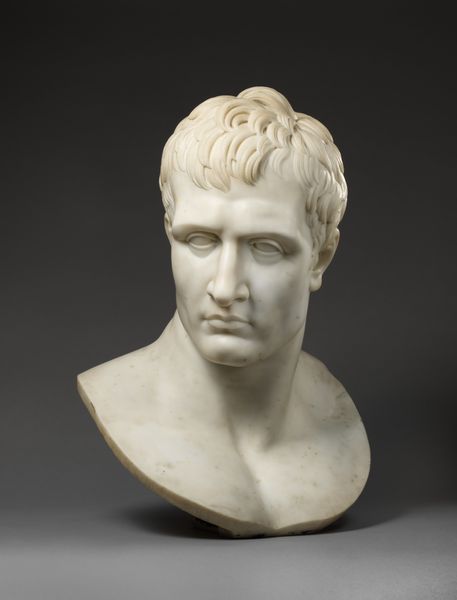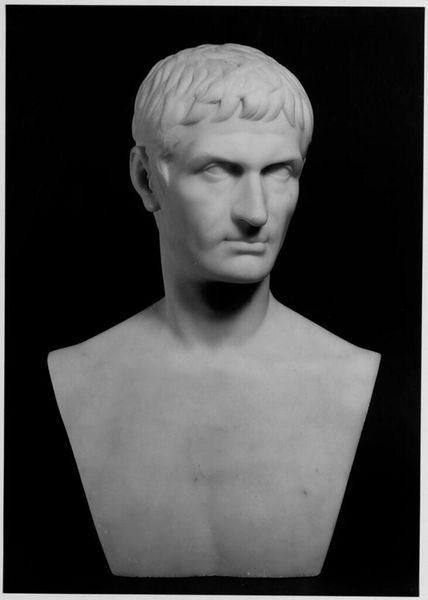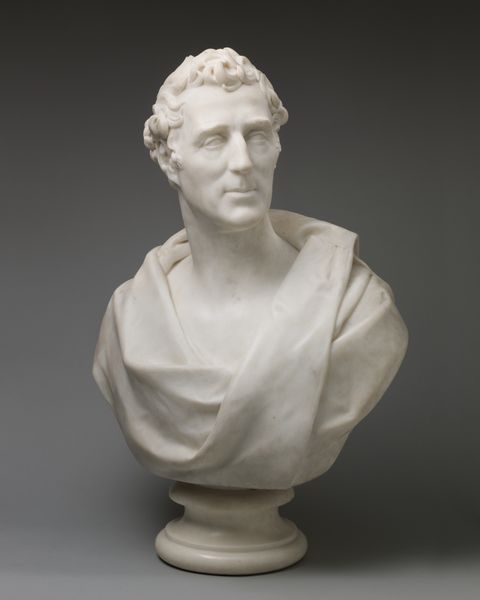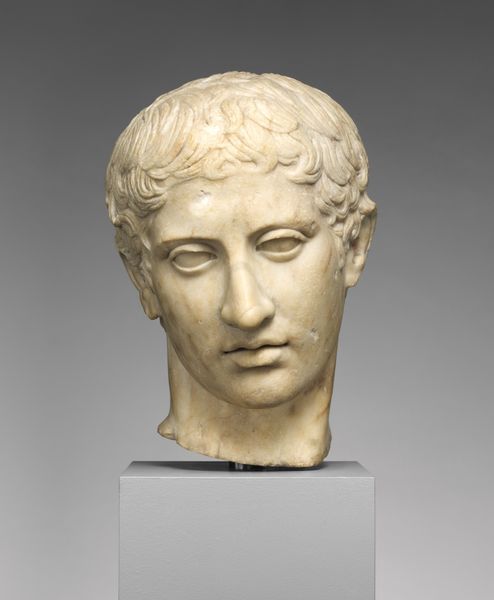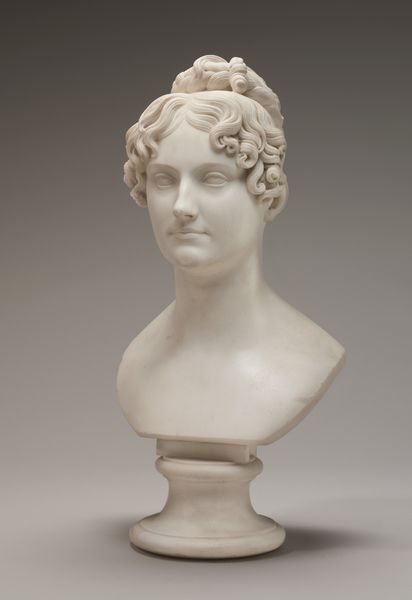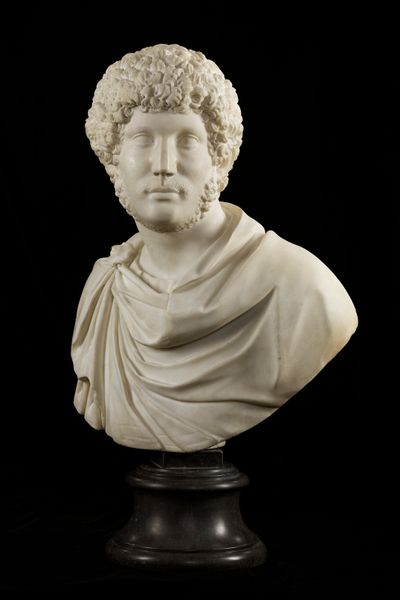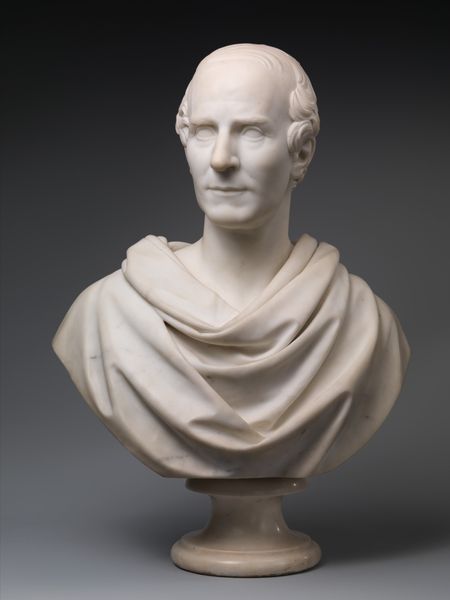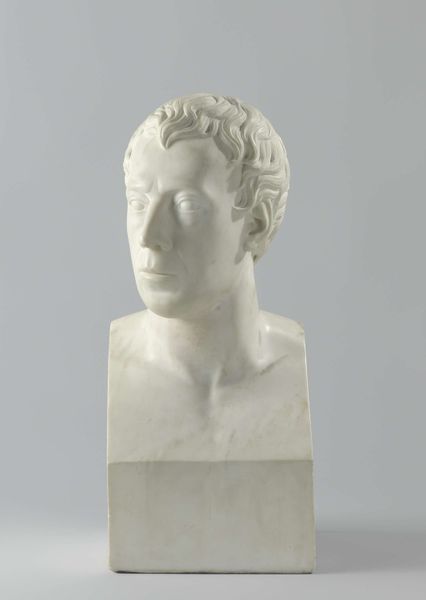
ceramic, sculpture
#
portrait
#
sculpture
#
ceramic
#
classical-realism
#
ancient-mediterranean
#
sculpture
#
academic-art
Dimensions: 16 x 9 1/2 x 9 1/2 in. (40.64 x 24.13 x 24.13 cm)
Copyright: Public Domain
Curator: This porcelain bust, crafted around the 18th century by the Doccia Porcelain Manufactory, represents the Roman Emperor Augustus. It's currently held in the collection of the Minneapolis Institute of Art. Editor: It's striking how the cool, almost ethereal quality of the porcelain transforms the figure of Augustus. The smooth, unbroken surface catches the light so beautifully. Curator: Absolutely. These porcelain effigies, reproducing iconic Roman figures, were very fashionable during the Enlightenment. They spoke to the period's fascination with antiquity and the desire to legitimize contemporary power through associations with the Roman Empire. Editor: Yes, but beyond its political function, consider the deliberate precision of the modeling—the refined curls, the idealized, youthful features… the artist’s skill in conveying likeness and even personality using such unforgiving material is impressive. Curator: And notice, the choice of Augustus, the founder of the Roman Empire. By disseminating images of his refined leadership, eighteenth-century elites perhaps wished to connect themselves with a similarly golden age, a vision of perfected governance. Editor: The delicate color palette—it's very restrained and uniform. I’m drawn to how the overall monochrome focuses your attention on the shape of the form and the interplay between light and shadow across its surfaces. Curator: These porcelain busts were often displayed in homes of wealthy Europeans as symbols of sophistication and refined taste, signs that one moved within elite cultural circles. Editor: It is remarkable to me that something like an individual can still speak across so many centuries to contemporary viewers, don't you think? It brings out a new vision of sculpture portraiture to the eyes of our generations. Curator: The story of this Augustus is one of power, artistic ambition, and the ongoing dialogue between past and present. A physical symbol, perhaps, of humanistic education. Editor: For me, it is primarily about the beauty of form and the artist's ability to render emotion and character from form and line. The interplay of textures and contours creates a captivating visual rhythm.
Comments
minneapolisinstituteofart almost 2 years ago
⋮
Other entrepreneurial operations for porcelain arose in Europe following the success of Meissen. Marchese Carlo Ginori was granted a monopoly to produce porcelain in Tuscany by the ruling Austrians in 1735, and developed a thriving soft-paste porcelain firm still in production today, Doccia (now Richard-Ginori) in Florence. Ginori gave another, more affordable, life in porcelain to the works of famous Florentine Baroque designer Giovanni Battista Foggini (1652-1725), whose original models he purchased. As well, his skilled modelers recreated Italian Imperial portrait busts such as this head of the Roman Emperor Augustus (who ruled from 27 BC - 14 AD).
Join the conversation
Join millions of artists and users on Artera today and experience the ultimate creative platform.
